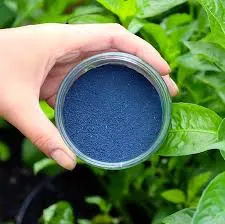famous indigo material
The Allure of Famous Indigo Material
Indigo, a deep blue dye derived from the indigo plant, has fascinated cultures across the globe for centuries. Renowned for its rich hue and historical significance, indigo material has played an essential role in the creation of textiles, art, and even fashion. From the ancient civilizations of the Indus Valley to modern-day designers, the story of indigo is one of creativity, tradition, and sustainable practices.
The History of Indigo
The earliest evidence of indigo dyeing dates back over 5,000 years to the Indus Valley civilization, where it was used to color cotton fabrics. The use of indigo spread rapidly across the world, adapted by various cultures who recognized its durability and vibrant color. In China, indigo was used as far back as the Han dynasty, while in Japan, the art of dyeing fabrics with indigo, known as “aizome,” became an integral part of their textile heritage.
In Europe, indigo became a valuable commodity during the 16th and 17th centuries, especially in France and England. The cultivation of indigo became established in the American colonies, with South Carolina emerging as a significant producer. The increased demand for indigo led to its nickname, “blue gold,” symbolizing its immense economic value. However, the history of indigo is also intertwined with complex and often painful narratives surrounding slavery and colonialism, highlighting the need for a reflective understanding of its historical context.
The Process of Indigo Dyeing
The process of creating indigo dye is fascinating and intricate. The indigo plant, primarily Indigofera tinctoria, is harvested for its leaves, which contain indican—a compound that transforms into the dye through fermentation and oxidation. The leaves are soaked in water to extract indicants, then fermented to create a solution from which the indigo dye can be derived.
Once the dye is prepared, the cloth—commonly cotton or silk—is immersed in the dye bath. This is where the magic happens as the fabric emerges from the bath and comes into contact with oxygen, a striking blue color develops. This unique dyeing process not only produces varying shades of blue but allows artisans to create intricate patterns, especially in traditional resist-dyeing techniques.
famous indigo material

Cultural Significance
Indigo is more than just a color; it carries cultural significance across many communities. In West Africa, indigo dyeing traditions are an important part of social fabric and identity, with the dye often used in ceremonial garments that signify status, community, and heritage. In Japan, the deep indigo hues of “noragi” (workwear) and “boro” textiles reflect a minimalist aesthetic that values simplicity and practicality.
The sustainable practices associated with indigo dyeing are also noteworthy. Unlike synthetic dyes, which often contribute to pollution and environmental degradation, indigo is a natural dye that, when produced organically, has a lower environmental impact. Artisans around the world are now advocating for organic indigo cultivation as a way to preserve traditional methods while promoting sustainable agriculture.
The Modern Renaissance of Indigo
In recent years, there has been a renaissance in the appreciation for indigo material, especially in fashion and artisan crafts. Designers increasingly turn to indigo for its timeless appeal, using the dye in everything from high-end couture to casual wear. This resurgence can be seen in brands that emphasize artisanal craftsmanship and ethical practices, appealing to consumers who value sustainability and unique, handcrafted items.
Moreover, the growing trend of slow fashion encourages people to rethink their clothing choices, promoting a shift away from fast fashion toward smaller production runs using natural materials like indigo. This movement is not only beneficial for the environment but also supports local artisans and preserves ancient crafts.
Conclusion
The story of indigo material is one of cultural heritage, environmental consciousness, and artistic expression. As we evolve in our understanding of sustainability and ethical practices, the allure of indigo persists, continuing to inspire artists, designers, and consumers alike. Whether through a beautifully dyed textile or a cherished piece of art, indigo remains a testament to our shared history and creative potential. In its rich hues, we find not just color but a narrative that binds us across time and geography, celebrating the enduring beauty of this remarkable dye.
-
Innovating Bromo Indigo Excellence
NewsAug.23,2025
-
Pioneering Indigo Plant Dye Excellence
NewsAug.23,2025
-
Leading Sulphur Black Dyes Enterprise
NewsAug.23,2025
-
Sulphur Black Dyes Light Resistance
NewsAug.23,2025
-
Indigo Blue Granular Industrial Uses
NewsAug.23,2025
-
Bromo Indigo Synthetic Production Process
NewsAug.23,2025
-
The Timeless Art of Denim Indigo Dye
NewsJul.01,2025

Sulphur Black
1.Name: sulphur black; Sulfur Black; Sulphur Black 1;
2.Structure formula:
3.Molecule formula: C6H4N2O5
4.CAS No.: 1326-82-5
5.HS code: 32041911
6.Product specification:Appearance:black phosphorus flakes; black liquid

Bromo Indigo; Vat Bromo-Indigo; C.I.Vat Blue 5
1.Name: Bromo indigo; Vat bromo-indigo; C.I.Vat blue 5;
2.Structure formula:
3.Molecule formula: C16H6Br4N2O2
4.CAS No.: 2475-31-2
5.HS code: 3204151000 6.Major usage and instruction: Be mainly used to dye cotton fabrics.

Indigo Blue Vat Blue
1.Name: indigo blue,vat blue 1,
2.Structure formula:
3.Molecule formula: C16H10N2O2
4.. CAS No.: 482-89-3
5.Molecule weight: 262.62
6.HS code: 3204151000
7.Major usage and instruction: Be mainly used to dye cotton fabrics.

